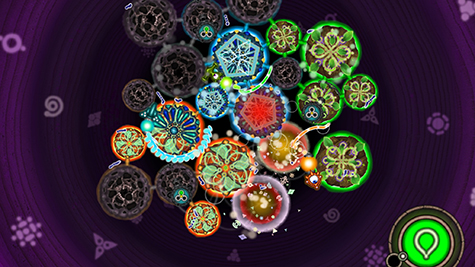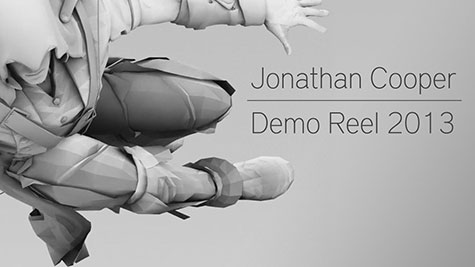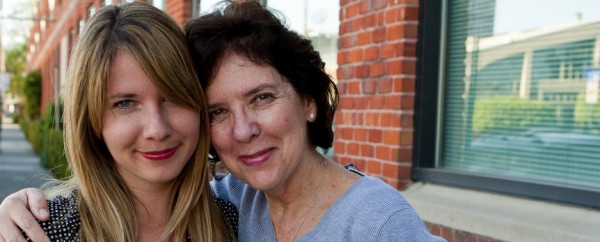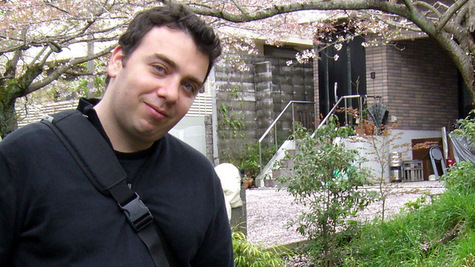Ludomotion was recently listed in Develop Magazine’s Europe 100 Most Exciting Start-Ups of 2013. With their first release, Bezircle (iOS and Android), and other projects like ‘Dules (F2P) in the pipeline, 2014 promises to be an exciting year for this fresh company. The company’s short history, its members, and vision for designing games tell a unique story of how game jams can lead to bigger things and how Ludomotion’s research aims to advance gameplay as we know it.
Global Game Jam Beginnings
Ludomotion’s five-headed formation consists of Joris Dormans, who holds a PhD in game research and design; Stephan van der Feest, a multi-talented software developer with a love for making music and strange sound effects; Koen Bollen, an immaculate programmer who will try to beat his opponent in any game or destroy it by finding a game breaking bug; Hendrik Visser, an artist who also designs theme parks; and Javier Sancho, a game studies graduate with experience in game journalism (editor’s note: he wrote for Gamesauce back in 2011) and game localization.
It all started at a 2011 Global Game Jam site in the Netherlands, two years before the company was even founded. During this 48-hour game-making event, the majority of us had met for the first time. Yet somehow, our rag tag gang of complete strangers managed to make a game together in less than two days. We had never seen or spoken to each other, except perhaps briefly. Joris was still working on his PhD dissertation and briefly met Javier in a bar only a week before. During the Game Jam registration, we all ran into each other again and decided to start a team. Javier had brought his bright red nineties keytar and although he couldn’t play it, he quickly found someone who did. Stephan, interested in his retro-styled instrument, played a quick tune and he was quickly drafted to join our team to make music (and it turned out he could do much more). Our team still needed an artist, so we made a sign saying “looking for artist with a mad brain” and it didn’t take too long before Hendrik joined in. The four members that would later found Ludomotion were joined by Monobanda’s Simon van der Linden and game design student Jeroen Houttuin.
Two days later, this party of strangers finished their first game, Bewbees: a cheeky casual physics puzzler that won the prize for best art and took third prize in the overall local competition. By the end of the weekend, we shared the stage with teams formed by members who are currently part of Vlambeer (of Ridiculous Fishing fame) and Abbey Games (with Steam debut hit: Reus).
Complete strangers before the Game Jam, We were happy with the game we made, but most of all, with the creative chemistry that bound our team together during the event.
So one year later, during the Global Game Jam in 2012, our original team consisting of Joris, Stephan, Hendrik, and Javier joined together again to see if the chemistry could be repeated at the 2012 Global Game Jam. This time, our team registered in Amsterdam, where the Jam was hosted at the local University of Applied Sciences (HvA) and where earlier that year, Stephan joined Joris as a lecturer for the game development program at that university. Our team was strengthened by two more lecturers: Koen Bollen and Remco van Swieten.
Although the Game Jam team had a different formation, the chemistry in this ‘team of lecturers’ worked again, and we ended up making a solid prototype for Bezircle: a one-button party strategy game with short, intensive matches for up to four local players. This time, we took home the 2nd prize, and the game featured at several independent game events in The Netherlands and abroad.
After the 2012 Game Jam, it was very clear to us that our second successful collaboration wasn’t just down to luck: we had something going. We all decided to found Ludomotion as a vehicle to pursue creative projects and innovative games, which we would build up next to our regular jobs as lecturers and researchers.
Bezircle & ‘Dules
Flash forward to February 2014. As Ludomotion now has a couple of games in the pipeline and more ideas in the freezer, a new challenge has arrived: to release the game into market. Ever since Bezircle was made during the Global Game Jam, Our team invested much time to polish the game to perfection and made sure it can be played across various platforms. However, at one point, we felt it was necessary to let the game simmer for a while, so we distracted ourselves with another project.
The result was ‘Dules: a cooperative, top-down shooter featuring fully customizable modular combat vehicles and endless amounts of procedurally-generated environments and challenges that test the players strategy and capacity to improvise field repairs to their vehicles. The first playable prototype was featured at the 2013 Indigo event and allowed the company to hone their technical expertise.
Refreshed, Ludomotion moved back to finishing Bezircle, which in the meantime was picked up by Ayopa Games for global release later this year. Behind the scenes, Ludomotion also works on a card based RPG in collaboration with FourceLabs, and is looking to go back to the game that started it all: Bewbees.
Advancing Research
Releasing games is only one of Ludomotion’s strategies to success. What actually drives all these diverse projects is the company’s strong ties to and interest with cutting-edge game research. Ludomotion’s games are fun, but at the same time, we are academic experiments under the supervision of in-house gameplay engineer: Dr. Joris Dormans. Ludomotion aims to advance the way we design games and optimize the game development process, especially when the games have emergent gameplay and procedurally generated content.
Machinations
One of the tools and frameworks developed by Joris Dormans is Machinations. It enables game designers to plan out a game’s feedback loops and internal economies allowing designers to balance the game in a much earlier development stage than usual. Published in several academic articles and popularized through the book Game Mechanics that Joris Dormans co-authored with Ernest Adams, Machinations is finding its way to more and more game companies worldwide. We do our best to actively help other developers who want to have a deeper insight in their game’s mechanics and the dynamic, emergent gameplay that might result from it.
Related to these gameplay models, we also spend a lot of time researching new methods of developing ‘Procedural Generated Content’ at Ludomotion. We see that procedurally generated content is increasingly being used in all kinds of games from casual to hardcore. Right now, the current methods mostly apply to level design only. We are continuing to research how procedurally generated content can be applied throughout the entire game design process to create new kind of games, and already have other games studios knocking on our door to learn from our best practices.
With all these innovative development and research projects, the biggest challenge for our company is to strike the best balance between them. So far, our projects have served our research and vice versa, but now the time has come to reach a wider audience.
Bezircle was recently published on iOS and Android by Ayopa Games, but its release is only the first step of a much longer journey. Ludomotion aims to release games that entertain millions of players while advancing game research and development at the same time.















